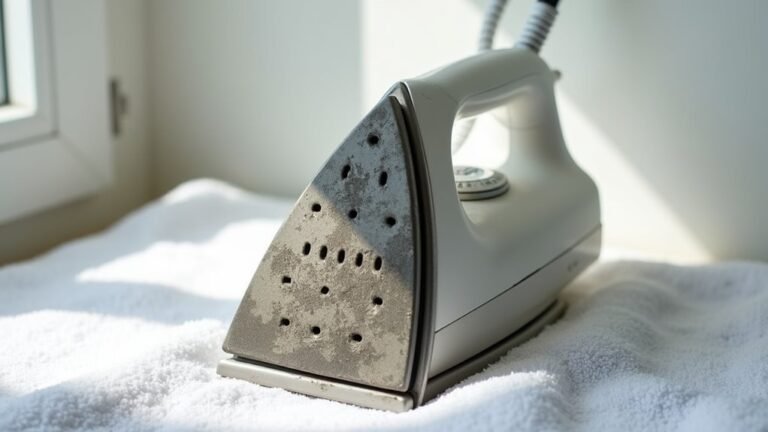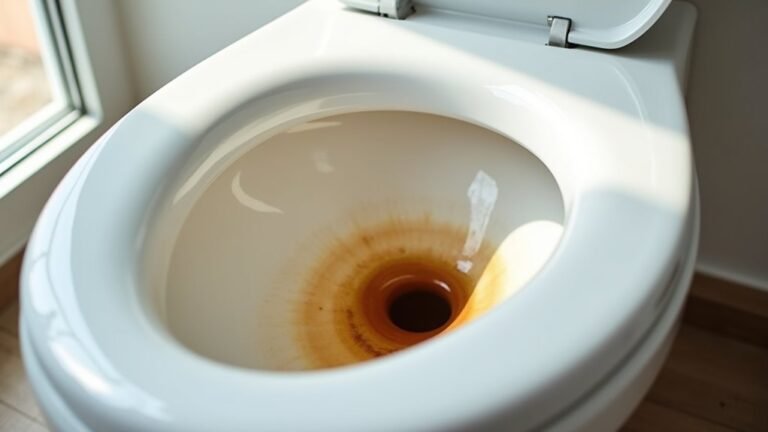Have you ever spilled turmeric and watched helplessly as it left bright yellow marks everywhere? Whether you’re making curry or a healthy drink, this orange-yellow spice can be a real pain when it gets on clothes or counters. Sure, it’s good for you and makes food taste amazing, but those stains are tough to deal with!
According to Martha Stewart Living, “Turmeric contains curcumin, a bright yellow chemical compound that binds strongly to fabrics and surfaces, making it one of the most challenging kitchen stains to remove.”
The good news is you don’t have to panic and scrub like crazy when turmeric spills happen. Instead of just hoping the stain will come out, there are better ways to tackle these tricky yellow marks. Let’s look at what really works to get rid of these stubborn stains.
Yellow Culprit’s Persistence Explained

Why does turmeric leave such persistent stains that seem impossible to remove?
It’s all about curcumin, turmeric’s active compound.
This natural dye binds quickly to fibers, especially when mixed with fats during cooking, which helps it penetrate deeper.
We’ve found that turmeric stains set within minutes—that’s why they’re so stubborn.
And once moisture hits the powder, you’re really in trouble as the yellow pigment intensifies over time. Quick action is essential for effective odor removal when dealing with tough stains like turmeric.
##
We’ve all faced those bright yellow marks that turmeric leaves behind, so let’s talk about what works and what doesn’t when tackling these stubborn stains.
I think the most important thing to remember is that quick action makes all the difference – catching stains early with soap and water before reaching for more powerful solutions like alcohol or baking soda paste.
Perhaps the biggest mistake people make is using bleach on turmeric stains, which can actually make them more permanent rather than removing them.
Things to Do When Cleaning Turmeric stains
When tackling turmeric stains, quick action is essential as the curcumin compound in turmeric rapidly adheres to surfaces and fibers.
The bright yellow pigment can become stubbornly set if not addressed immediately, potentially leaving permanent discoloration on clothing, countertops, containers, and other materials.
Fortunately, with the right approach and household ingredients, even the most vibrant turmeric stains can be effectively removed before they become permanent fixtures in your home.
- Act immediately: Rinse the stained area with cold water as soon as possible to prevent the curcumin from binding to the surface.
- Create a cleaning solution: Mix dish soap and white vinegar to break down the turmeric pigment at a chemical level.
- Allow solution to penetrate: Let the cleaning mixture sit on the stain for 10-15 minutes to loosen the pigment before cleaning.
- Scrub gently: Use an old toothbrush or non-abrasive sponge to work the solution into the stain without damaging the material.
- Add baking soda for stubborn stains: Incorporate baking soda into your cleaning mixture for additional abrasive action on persistent stains.
- Test stronger solutions first: Before applying vinegar or other stronger cleaners, test on an inconspicuous area to prevent damage.
- Utilize sunlight: After treatment, place fabric items in direct sunlight to naturally fade any remaining turmeric residue through UV exposure.
- Repeat if necessary: For deeply set stains, you may need to repeat the cleaning process several times for complete removal.
Things to Avoid When Cleaning Turmeric stains
Cleaning turmeric stains requires careful attention to avoid making the situation worse.
The vibrant yellow pigment in turmeric, called curcumin, is notoriously difficult to remove once set.
This is why knowing what not to do is just as important as knowing the proper cleaning methods.
Incorrect approaches can permanently set the stain or damage your materials, turning a temporary mishap into a lasting problem.
- Hot water: Avoid using hot water on turmeric-stained fabrics as it sets the pigment deeper into fibers, making the stain permanent.
- Abrasive scrubbing tools: Don’t use rough brushes or abrasive pads as they can grind the curcumin compound further into surfaces, intensifying the stain.
- Bleach on colored items: Never apply bleach to colored fabrics or soft plastics stained with turmeric, as it will likely cause discoloration or material damage.
- Untested cleaning solutions: Avoid applying stronger solutions like vinegar without first testing on an inconspicuous area to prevent potential damage to delicate materials.
- Extended sunlight exposure: Don’t leave stained items in direct sunlight for prolonged periods without treatment, as this may weaken materials while failing to completely remove the stain.
Steps
Turmeric stains are notoriously challenging to remove due to the powerful pigment called curcumin that gives the spice its vibrant yellow color.
This compound can quickly bind to surfaces, especially porous ones like fabrics, plastic containers, and countertops, creating stubborn stains that seem impossible to eliminate.
However, with the right approach and household ingredients, you can effectively tackle these bright yellow marks before they become permanent.
Step 1: Rinse the stained area immediately with cold water to prevent the curcumin from setting deeper into the surface.
Step 2: Create a cleaning solution by mixing dish soap and white vinegar in equal parts.
Step 3: Apply the solution directly to the stain and allow it to sit for 10-15 minutes to break down the pigment.
Step 4: Gently scrub the area with an appropriate non-abrasive tool (toothbrush for fabrics, sponge for hard surfaces).
Step 5: For persistent stains, make a paste using baking soda with the soap-vinegar mixture and apply it to the stain for another 15 minutes.
Step 6: Rinse thoroughly and wash the item according to its care instructions.
Step 7: If possible, place the item in direct sunlight to help naturally fade any remaining discoloration.
Final Thoughts
While you’ve now learned the step-by-step process for battling turmeric stains, there’s something important to remember about these yellow culprits – they’re stubborn by nature.
We’ve found that acting quickly is perhaps your best defense.
Sometimes, despite our best efforts, some materials just won’t fully release the stain.
That’s why we always recommend prevention first – gloves and dark utensils are truly your best friends when cooking with turmeric.
##

Turmeric’s vibrant color may leave its mark, but armed with the right knowledge, you can tackle these stubborn stains with confidence.
Remember that time is of the essence—addressing spills immediately with cold water can save you considerable effort later on.
The power of everyday household ingredients like baking soda, white vinegar, and lemon juice proves you don’t need expensive specialty products to combat turmeric stains effectively. Additionally, employing natural cleaning methods can further enhance your stain-fighting arsenal.
Whether on fabrics, countertops, dishes, or even your skin, these natural solutions can restore surfaces to their former glory.
Prevention remains your best strategy, so consider incorporating simple habits like using designated utensils, wearing gloves when handling turmeric, and keeping cleaning supplies within reach during cooking.
Don’t let the fear of staining prevent you from enjoying the wonderful flavor and health benefits of this golden spice.
With these techniques in your cleaning arsenal, you can embrace turmeric in your cooking while keeping your home and belongings bright and stain-free.
Next time you see that telltale yellow mark, you’ll know exactly what to do—and that’s something worth celebrating!






